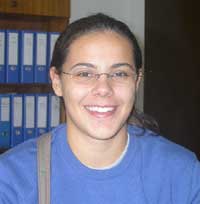
WHO INVENTED THE
PIANO?
The word "piano" is the
shortened form of "pianoforte." The complete original name is, in
Italian, "gravicembalo col piano e forte," which
means "harpsichord with soft and loud [tones]." This refers to the
piano's ability to produce varying degrees of loudness according to how
hard a key is pressed. The piano was invented by Bartelemeo Cristofori,
an employee of the Medici family, in Florence, Italy in the early 1700s.
Cristofori died in 1731. During his lifetime, he built approximately
twenty pianos, about three of which are still in existence.
The invention remained
unknown until 1711, when Scipione Maffei wrote an article about the
piano which included a diagram of the hammer mechanism. This article was
also crucial for the next generation of piano builders, who were
starting to work on their own models.
One of them, Gottfried
Silbermann, invented the sustaining pedal. He showed an early model of
his piano to Bach in the 1730s. Bach thought that the higher notes were
too soft. Silbermann did not give up, and 1747 he gained Bach's approval
with an improved version. Bach also helped him as an agent to sell his
pianos.
By the late 18th century,
the production of pianos had increased. Three important Viennese makers,
Johann Andreas Stein, Nannette Stein and Anton Walter, were building the
Viennese-style piano. Mozart used this model while composing his
concertos and sonatas. This piano had a softer and clearer tone than
today's.
In the early 19th
century, the Broadwood firm was one of the most important piano
manufacturers. They made pianos for Haydn and Beethoven, among others.
In 1810 they built a piano with six octaves for Beethoven, to
accommodate the range of notes in his works. In 1820 the Erard firm in
Paris became the leading innovator in the field, building pianos used by
Chopin and Liszt. They added a new feature called double escapement,
which allowed a note to be repeated rapidly. After being refined by
Hertz in 1840, this feature was used by all piano manufacturers.
With composers' and
pianists' demands for a more powerful instrument with the ability to
produce more sustained tones, the piano took on its modern form during
the 1890s. By this time, the total range had increased from the five
octaves of Mozart's day to the seven octaves found in modern pianos.
This is dedicated to
those who have always wondered who invented the
piano. Have a nice week.
Sıla Türkü Kural (EE/III)
turku@ug.bilkent.edu.tr
 |







